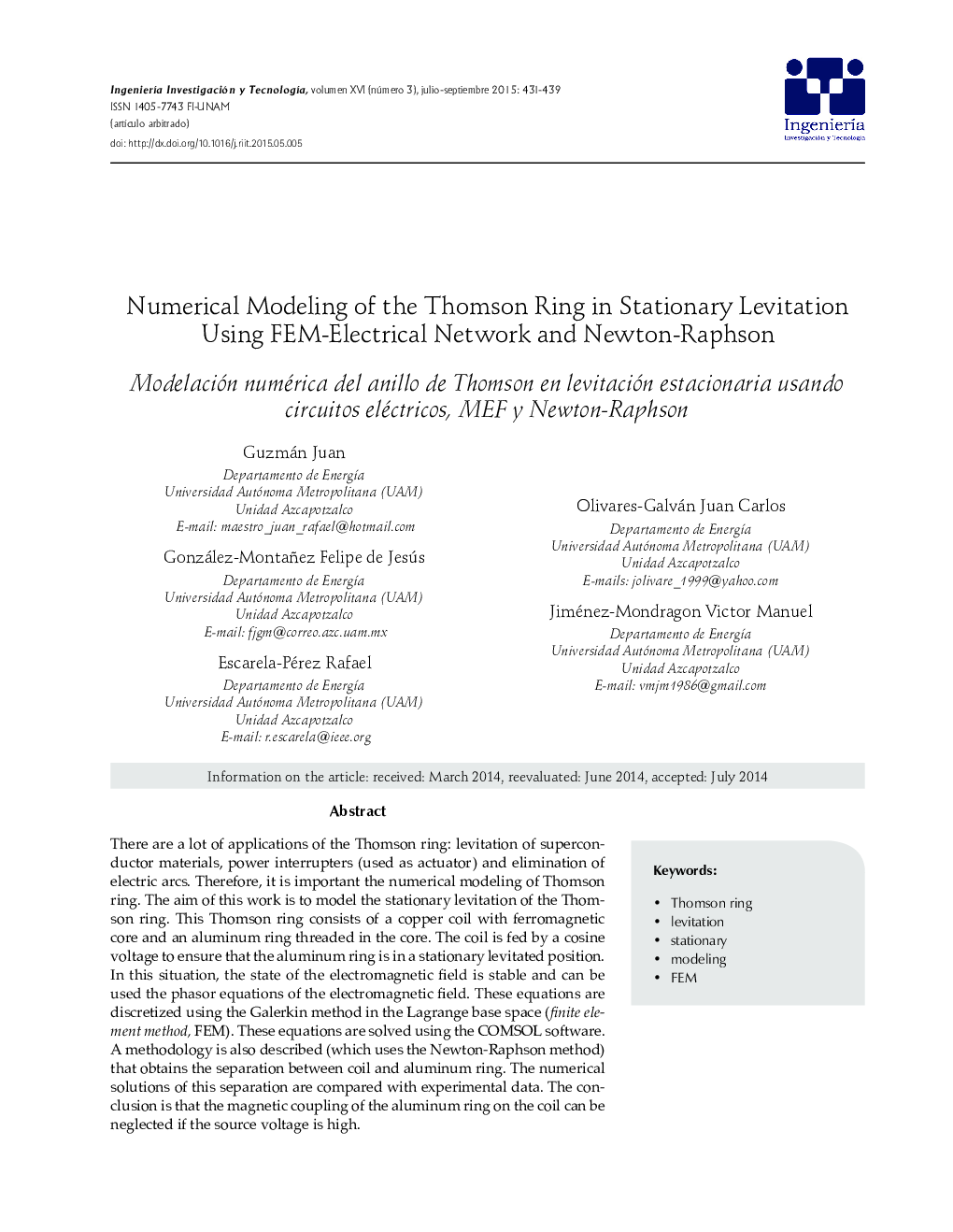| کد مقاله | کد نشریه | سال انتشار | مقاله انگلیسی | نسخه تمام متن |
|---|---|---|---|---|
| 274886 | 505382 | 2015 | 9 صفحه PDF | دانلود رایگان |

There are a lot of applications of the Thomson ring: levitation of superconductor materials, power interrupters (used as actuator) and elimination of electric arcs. Therefore, it is important the numerical modeling of Thomson ring. The aim of this work is to model the stationary levitation of the Thomson ring. This Thomson ring consists of a copper coil with ferromagnetic core and an aluminum ring threaded in the core. The coil is fed by a cosine voltage to ensure that the aluminum ring is in a stationary levitated position. In this situation, the state of the electromagnetic field is stable and can be used the phasor equations of the electromagnetic field. These equations are discretized using the Galerkin method in the Lagrange base space (finite element method, FEM). These equations are solved using the COMSOL software. A methodology is also described (which uses the Newton-Raphson method) that obtains the separation between coil and aluminum ring. The numerical solutions of this separation are compared with experimental data. The conclusion is that the magnetic coupling of the aluminum ring on the coil can be neglected if the source voltage is high.
ResumenExisten una gran cantidad de aplicaciones del anillo de Thomson: levitación de materiales superconductores, interruptores de potencia (usados como actuadores) y eliminación de arcos eléctricos. Por lo tanto, es importante la modelación del anillo de Thomson. El objetivo de este trabajo es modelar la levitación estacionaria del anillo de Thomson. Este anillo de Thomson consiste de una bobina de cobre con núcleo ferromagnético y un anillo de aluminio enhebrado en el núcleo. La bobina se alimenta por un voltaje cosenoidal para asegura el anillo de aluminio en una posición de levitación estacionaria. En esta situación, el campo electromagnético se puede considerar estable y se pueden emplear las ecuaciones fasoriales del campo electromagnético. Estas ecuaciones se discretizan usando el método de Galerkin en el espacio base de Lagrange (método de elementos finitos, FEM). Estas ecuaciones discretizadas se resuelven usando el código COMSOL. Además, se describe una metodología con la cual se puede obtener la separación entre la bobina y el anillo de aluminio. Esta metodología usa el método de Newton-Rapson. Las soluciones numéricas de esta separación se comparan con datos experimentales. Se concluye que el acoplamiento magnético entre el anillo de aluminio sobre la bobina se puede despreciar si el voltaje de alimentación es alto.
Journal: Ingeniería, Investigación y Tecnología - Volume 16, Issue 3, July–September 2015, Pages 431–439